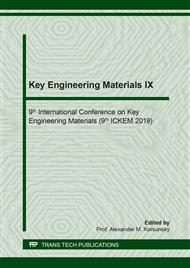p.111
p.118
p.125
p.131
p.137
p.144
p.153
p.160
p.167
Parametric Study on Surface Roughness of Metallized Parts Manufactured by Additive Manufacturing
Abstract:
In the current technological evolution, additive manufacturing is taking a lead role in manufacturing of components for both prototyping as well as finished products. Metallization of the polymer parts has high potential to add value in-terms of metallic luster, improved strength, long shelf-life and better radiation resistance. Standard acid copper plating process has been adopted for deposition of copper on polymer parts manufactured by fused deposition modelling (FDM) technique. The parameters namely the etching time, voltage and the surface finish of the manufactured FDM parts are studied for their influence on the surface quality. Experiments have been designed using design of experiments strategy. Experiments have been conducted and surface roughness has been measured. Influence of each of the three parameters has been discussed in detail. For the reported process the optimal value of etching time of Acrylonitrile Butadiene Styrene (ABS) has been found in the range of 30 to 60 minutes along with applied voltage in the range of 1.5 to 2.5 Volts for copper electroplating.
Info:
Periodical:
Pages:
137-143
Citation:
Online since:
September 2019
Authors:
Price:
Сopyright:
© 2019 Trans Tech Publications Ltd. All Rights Reserved
Share:
Citation:



